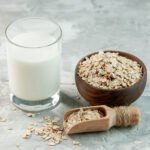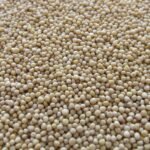Explore the journey of flour from being a staple in ancient civilizations to its versatile role in modern cuisine, along with its nutritional aspects.
From Ancient Mills to Modern Kitchens
Ever wonder about the history of that bag of flour in your pantry? Well, buckle up! You’re about to embark on a fascinating journey. From its ancient origins to its modern-day versatility, flour’s story is as rich and varied as the many recipes it gives life to.
Grab a cup of coffee, and let’s dive into the wonderful world of flour: where it comes from, the myriad ways it can be used, and the nutritional punch it packs.
The Flour-y Past: A Brief History
Flour, a staple in kitchens across the globe, has a history as rich as a well-risen loaf of bread. The earliest forms of flour were made from a variety of wild grains and were an essential part of our ancestors’ diet as far back as 30,000 years ago.
Over time, as agriculture developed, grains like wheat and barley became the go-to sources for flour. From ancient Egyptian bread to Roman Empire’s grist mills, flour has long held a coveted place in our culinary history.
Flour Power: Types and Culinary Uses
When we say “flour,” you likely think of the all-purpose variety. However, it’s just the tip of the iceberg. From wheat to rye, corn to coconut, and a bevy of others in between, there’s a flour for every purpose under the sun.

Need to thicken a sauce? There’s flour for that. Fancy some pancakes for breakfast? Flour’s got you covered. Craving a slice of crusty bread? Yup, you guessed it. Flour is a baker’s best friend!
Nutritional Nitty-Gritty: What’s in Your Flour?
Despite its seemingly humble nature, flour can be quite the nutritional powerhouse. However, its nutritional profile varies wildly depending on its source. Let’s take a look at the nutritional content of a few common flours per 100g:
| Flour Type | Calories | Protein | Fiber | Carbohydrates |
|---|---|---|---|---|
| All-Purpose Wheat | 364 | 10g | 3.4g | 76g |
| Whole Wheat | 340 | 14g | 13g | 72g |
| Coconut | 443 | 6.3g | 22g | 65g |
| Almond | 607 | 21g | 10g | 20g |
Frequently Asked Questions about Flour
Which Flour is Healthiest?
There’s no one-size-fits-all answer here, as it depends on your dietary needs and preferences. Generally, whole grain flours like whole wheat or spelt are higher in fiber and nutrients than their refined counterparts.
Is it Safe to Eat Raw Flour?
Not really. Raw flour can contain harmful bacteria like E. coli, so it’s always recommended to cook flour-based foods thoroughly before consuming.
Can Flour Go Bad?
Yes, over time, flour can go rancid due to the oils in the grains. Store it in a cool, dry place, and check the expiry date before using.
End Note: Flour’s Place in Our Kitchens and Hearts
From a long-standing history to a broad spectrum of uses and considerable nutritional value, flour is more than just a kitchen staple. It’s an integral part of our culinary heritage and a versatile player in our food landscape.
So, next time you reach for that bag of flour, remember its rich history and the diversity it brings to our plates and palates. It’s not just an ingredient; it’s a connection to our past and a delicious possibility for our future.
Source: NCBI: The Prehistoric and Preindustrial Diet




